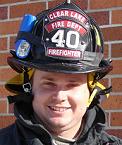
Simviation Forums
Flight Simulator and other chat

Here's another question that I asked the same professor today, and he didn't exactly give me a straight answer. The thing with him is that he's quite a bit older of a fellow and he's got tonnes of experience, he's got every sort of license under the sun including an aerobatic's instructor rating so I asked him how to recover from a tail stall, the only thing he really told me was to pull back on the stick instead of forward, which didn't make a whole lot of sense, I then asked him about power settings for such a recovery and he wasn't too sure as the last time he had looked at such a procedure was at least three years ago... and the likelihood of this scenario ever happening at my school is slim to none as we are not allowed to fly in known icing conditions, both single engines and multi-engines owned by the school simply aren't rated for such conditions. Being a curious person who wants to know everything about everything, what is the procedure for such a scenario?





Now, how about Reynolds number? At small Mach numbers, how does decreasing the weight and thus TAS affect L/D?




I kind of have a sneaking suspicion that those two climbing planes would make it relatively closer to the same time. My reasoning is that, while both airplanes will have to increase their airspeed as height increases to maintain the rate of climb they want (assuming they're both climbing at the same rate), then the heavier airplane will have to be traveling at a faster velocity than the lighter one, simply because of drag I think. I think it's very possible to get the two planes at point B at the same time.

Here's another question that I asked the same professor today, and he didn't exactly give me a straight answer. The thing with him is that he's quite a bit older of a fellow and he's got tonnes of experience, he's got every sort of license under the sun including an aerobatic's instructor rating so I asked him how to recover from a tail stall, the only thing he really told me was to pull back on the stick instead of forward, which didn't make a whole lot of sense, I then asked him about power settings for such a recovery and he wasn't too sure as the last time he had looked at such a procedure was at least three years ago... and the likelihood of this scenario ever happening at my school is slim to none as we are not allowed to fly in known icing conditions, both single engines and multi-engines owned by the school simply aren't rated for such conditions. Being a curious person who wants to know everything about everything, what is the procedure for such a scenario?


I kind of have a sneaking suspicion that those two climbing planes would make it relatively closer to the same time. My reasoning is that, while both airplanes will have to increase their airspeed as height increases to maintain the rate of climb they want (assuming they're both climbing at the same rate), then the heavier airplane will have to be traveling at a faster velocity than the lighter one, simply because of drag I think. I think it's very possible to get the two planes at point B at the same time.
If point B is distance from takeoff, AND an altitude.. the heavier airplane would need more thrust than the lighter.. AND bigger wings to get to the same point, at the same time.


I kind of have a sneaking suspicion that those two climbing planes would make it relatively closer to the same time. My reasoning is that, while both airplanes will have to increase their airspeed as height increases to maintain the rate of climb they want (assuming they're both climbing at the same rate), then the heavier airplane will have to be traveling at a faster velocity than the lighter one, simply because of drag I think. I think it's very possible to get the two planes at point B at the same time.
If point B is distance from takeoff, AND an altitude.. the heavier airplane would need more thrust than the lighter.. AND bigger wings to get to the same point, at the same time.
But what if Point A was not takeoff, but some random point when climb is firmly established?



The assumption is that the heavier airplane will need to fly at a higher IAS just to climb fast enough to manage it... but will it get there faster?
 )
)


Been reading along - nodded off a couple of times and my head, teeth and butt hurt.making my head hurt.

Users browsing this forum: No registered users and 334 guests